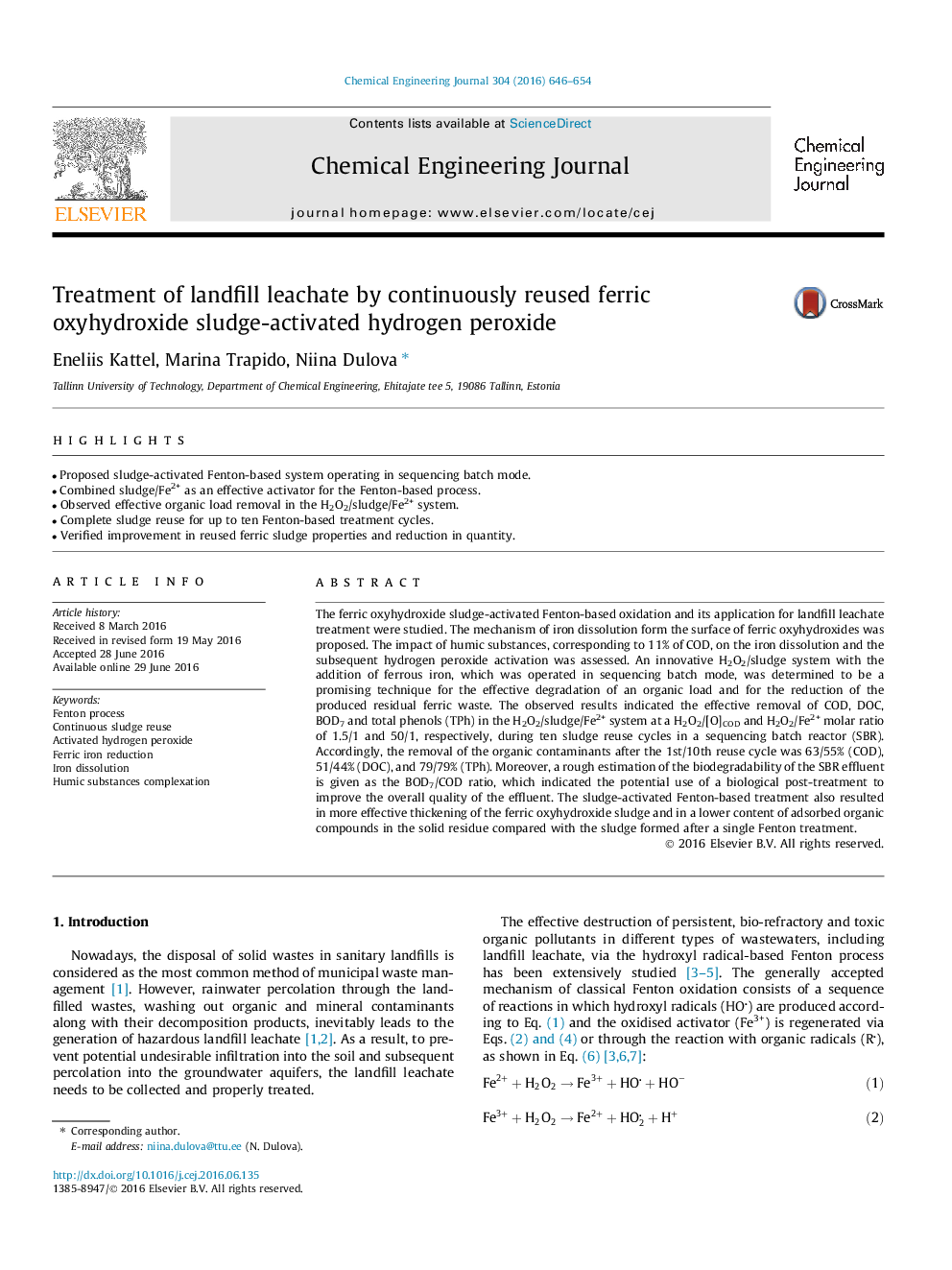| کد مقاله | کد نشریه | سال انتشار | مقاله انگلیسی | نسخه تمام متن |
|---|---|---|---|---|
| 6581330 | 456337 | 2016 | 9 صفحه PDF | دانلود رایگان |
عنوان انگلیسی مقاله ISI
Treatment of landfill leachate by continuously reused ferric oxyhydroxide sludge-activated hydrogen peroxide
ترجمه فارسی عنوان
درمان سدیم دفن زباله با استفاده از پراکسید هیدروژن فعال لجن فرایند اکسید هیدروکسید فریک
دانلود مقاله + سفارش ترجمه
دانلود مقاله ISI انگلیسی
رایگان برای ایرانیان
کلمات کلیدی
موضوعات مرتبط
مهندسی و علوم پایه
مهندسی شیمی
مهندسی شیمی (عمومی)
چکیده انگلیسی
The ferric oxyhydroxide sludge-activated Fenton-based oxidation and its application for landfill leachate treatment were studied. The mechanism of iron dissolution form the surface of ferric oxyhydroxides was proposed. The impact of humic substances, corresponding to 11% of COD, on the iron dissolution and the subsequent hydrogen peroxide activation was assessed. An innovative H2O2/sludge system with the addition of ferrous iron, which was operated in sequencing batch mode, was determined to be a promising technique for the effective degradation of an organic load and for the reduction of the produced residual ferric waste. The observed results indicated the effective removal of COD, DOC, BOD7 and total phenols (TPh) in the H2O2/sludge/Fe2+ system at a H2O2/[O]COD and H2O2/Fe2+ molar ratio of 1.5/1 and 50/1, respectively, during ten sludge reuse cycles in a sequencing batch reactor (SBR). Accordingly, the removal of the organic contaminants after the 1st/10th reuse cycle was 63/55% (COD), 51/44% (DOC), and 79/79% (TPh). Moreover, a rough estimation of the biodegradability of the SBR effluent is given as the BOD7/COD ratio, which indicated the potential use of a biological post-treatment to improve the overall quality of the effluent. The sludge-activated Fenton-based treatment also resulted in more effective thickening of the ferric oxyhydroxide sludge and in a lower content of adsorbed organic compounds in the solid residue compared with the sludge formed after a single Fenton treatment.
ناشر
Database: Elsevier - ScienceDirect (ساینس دایرکت)
Journal: Chemical Engineering Journal - Volume 304, 15 November 2016, Pages 646-654
Journal: Chemical Engineering Journal - Volume 304, 15 November 2016, Pages 646-654
نویسندگان
Eneliis Kattel, Marina Trapido, Niina Dulova,
